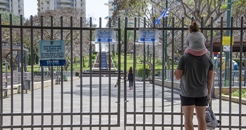 Community life - a trade-off between inclusion and exclusivity
Community life - a trade-off between inclusion and exclusivity
Based on an article by Patrick Brown, a senior policy adviser in the USA and published by the Institute of Family Studies
[Note WOTS - this was originally written for an American context. It's adapted for the UK.]
A cornerstone of many attempts to strengthen the social fabric, the concept of “social capital” often calls to mind St George, St Patrick Day parades, sport leagues and community festivals. The bonds that turn a geographic neighbourhood into a community often get cemented by shared experiences or characteristics, celebrated at events like Last Night at the Proms or the annual Cooper's Hill Cheese-Rolling event in Gloucestershire.
We would, I think, find it very un-British if these public events and celebrations were limited to those with certain means: what would the headlines be if only those with an income over £100,000 are allowed to march in a St George's Day parade this year, or tickets for community festivals were rationed to only two-earner households with no children?
This example is admittedly frivolous. But it analogizes the very real price discrimination that well-meaning communities erect against families and households who wish to live in a community with thick social ties but who are unable to afford the price of admission.
The forces of social exclusion often draw on otherwise-salutary forces of community cohesion and social capital. The understandable drive to preserve a certain flavour of community life always involves some kind of trade-off between inclusion and exclusivity.
The most strenuous opponents of newcomers into a community aren’t necessarily those opposed to different cultures, but the community activists that protest new development or zoning restrictions, speaking against measures that would increase affordable housing options.
School boundaries are a tool in this arsenal as well. Good schools make a given residence more desirable and these have adverse consequences for housing affordability and home ownership.
Not only do affluent areas generate positive externalities (like lower crime) and education perceived as higher quality, but ever-increasing house prices are a way to feather a nest egg for the residents of those neighbourhoods. That benefit comes at the expense of young families or the less-well-off, unable to achieve the community life they desire at a price they can afford.
Commentators that prescribe “social capital” as a solution to the problems facing the disadvantaged, therefore, should keep in mind that no amount of extolling community empowerment will necessarily lead to a renaissance of community bonhomie. The rise of gated communities, and rigidly-zoned suburbs are a way of ensuring that self-selected communities can thrive. Those in communities without a thick social fabric are left behind if a focus on “social capital” does not include positive steps to rehabilitate or catalyse the work of churches, non-profit groups, and other associations that reflect a healthy community life.
No one is limiting attendance at next year’s St George's Day parade based on net worth. But the healthy social fabric of a thriving community is a public good that merits investment to ensure that the everyday benefits of community life are not reserved to those with means. Anyone who cares about opportunity should take seriously the idea of building out and advancing a policy agenda oriented around making intermediary associations vital and vibrant.
Read the original article here.
Retweet about this article:
Based on an article by Patrick Brown, published by, 25/01/2022